- Home
- Loren D. Estleman
The High Rocks
The High Rocks Read online
The author and publisher have provided this e-book to you without Digital Rights Management software (DRM) applied so that you can enjoy reading it on your personal devices. This e-book is for your personal use only. You may not print or post this e-book, or make this e-book publicly available in any way. You may not copy, reproduce or upload this e-book, other than to read it on one of your personal devices.
Copyright infringement is against the law. If you believe the copy of this e-book you are reading infringes on the author’s copyright, please notify the publisher at: us.macmillanusa.com/piracy.
Table of Contents
Title Page
Copyright Notice
1
2
3
4
5
6
7
8
9
10
11
12
13
14
15
Other works by Loren D. Estleman
Copyright Page
To my mother and father,
once again and with feeling.
1
For three years running, the north central section of Montana’s Bitterroot Mountain range was struck by a series of harsh winters that paralyzed transportation and left the old-timers with nothing to talk about in the way of worse winters gone by. During one ninety-day period, temperatures plummeted from a record one hundred and five degrees in late August to minus forty-two on Thanksgiving Day. Winds blasting straight down from the North Pole swept snow clouds before them in an incessant stream, smothering the jagged landscape beneath shrouds of snow which in March of the third year obliterated all but the roofs and the church steeple in Staghorn, the one settlement that had managed to survive the ruthless climate of the Bitterroot.
Most of the damage, however, remained undiscovered until the final spring thaw, when the snows receded and landowners were able to gaze for the first time upon the winter’s legacy. Cattle were found frozen stiff in huddles of up to a dozen. Barns and corncribs were crushed flat beneath tons of snow or smashed to splinters by the avalanches that heralded the onslaught of warm weather. Great trees that had stood for centuries jammed narrow mountain passes where they had fallen after being uprooted by the tremendous pressure of the glaciers sliding down from the peaks. Corn and silage, deprived of its shelter, had been taken up by the heavy winds and strewn all over the countryside, leaving without food what little livestock remained. Everyone had his work cut out for him in the spring of that third year.
But whatever their troubles, no matter how large a task they had ahead of them, the people of Staghorn and its environs could take comfort in knowing that there was one who was worse off than they. Somewhere in that sprawling wilderness, far above the level they considered safe in any season, there existed a man who had elected to brave the winter’s perils alone and unprotected. Of all the mountaineers, he alone had not come down from the high country at the first sign of blizzard. And when the flood waters had subsided and the time had come to see about gathering together the fragments of their lives, the farmers paused in the midst of rebuilding their barns and laying new sod on the roofs of their houses to look up at the hostile mountains and ask:
“I wonder how Bear made out?”
Bear Anderson was as much a part of the lore of that wild region as the Flathead Indians, who still took time out occasionally to cross the mountains in order to do battle with the nomadic tribes over the game-rich plains that flanked the foothills, or the marauding packs of wolves that terrorized farmer and cattleman alike when the snows were deep and game scarce. To children he was the Bogey Man, a figure of towering menace who would swoop down from the mountains and devour them at a gulp if they neglected their chores or failed to say their prayers before retiring. The name given to him by the Indians was unprintable in any language, but in moments of charity they called him Mountain That Walks, a force more to be avoided than reckoned with. To everyone he was a presence, a thing seldom seen but nonetheless there, like the great pines that grew high on the snow-capped peaks and were seen close up only by mountain goats and soaring eagles.
He was the son of a Norwegian logger and his Swedish wife who had come there early in the 1830s, lured by tales of virgin timber and the riches that awaited the man who could carry his weight in the lumber camps. Those who had known Thor Anderson said that he was nearly six and a half feet tall and capable of felling a white pine in fifteen fewer strokes than it took his closest rival. His wife, Greta, bore him six sons, four of whom died in infancy. Of the fifth, Olaf, little was known except that he marched off to fight for the Union in 1861 and never returned. That left Bear.
If that was his true Christian name, or if it had been bestowed upon him because of his size, no one knew. Bear he had always been, and Bear he would always be. It was a name that suited him like the sun the sky. Of the two surviving sons, it was he who most took after his father, both in build and disposition. At the age of twelve he was six-foot-two and still growing; by his twenty-first birthday it was said that he had surpassed his father, with arms like pork barrels and shoulders so broad he had to swivel them to get through a doorway, like a deliveryman carrying a kitchen stove. There was no denying that at his maturity he was the biggest man in Staghorn. That he grew to be larger than his father could not be proved, however, because by that time Thor Anderson was dead, and so was his wife, Greta.
In the 1860s the Bitterroot range served as a buffer zone between no fewer than four Indian nations. To the northwest lived the Kootenays, avid hunters who nevertheless avoided tracking game into the mountains for fear of coming into contact with their mortal enemies, the fierce Blackfeet who made their home along the upper Missouri River. Eastward lay the territory of the Crows, the boundaries of which remained fluid as they moved with the migratory bison, a year-round source of food, clothing, shelter and fuel. In the mountains themselves existed the Flatheads, or Salish. Of all the savage tribes, these were the most feared, as they were known to cross the mountains in search of a fight, and it mattered little whether their victims were Crows or white settlers, for they lived only to spill blood. Long periods of uneasy peace laced with sporadic outbursts of violence had made the prospect of living in the mountains an unsettling one for all but the Flatheads. It was only by a cautiously maintained system of trade and tribute that any white was allowed to remain above the level of the plains, and there were times when even that was not enough, as the Andersons learned early in 1862.
The War Between the States was not a year old when Bear returned from an overnight hunting trip into the mountains, a buck deer slung across his saddle, and discovered his parents’ cabin burned to the ground. The snow that had not melted before the heat of the blaze was trampled with moccasin prints and the tracks of unshod horses. Inside, he found his parents—what was left of them—huddled together beneath the charred debris of the bedroom as if Thor with his last act had tried to shield his wife from the Indians’ attack. Near the bodies lay the double-bitted axe which Bear had seen his father use every day of his life; the blade was clotted with blood and hair, singed and blackened by the fire. That meant that one brave at least had paid for this slaughter, probably with his life. There was not a scrap of food or a usable good to be found anywhere in the wreckage of the cabin, and the horses were missing from the lean-to stable out back. The motive for the slayings, then, was clear; the Andersons had been guilty of having more than the savages.
It took a fire almost as large as that which had consumed the cabin to thaw out the ground enough for Bear to bury his mother and father. When that was finished he left and, according to all accounts, never returned to the site. He took along only his horse, the supplies he had with
him, and his gun, a Spencer carbine. There was nothing else to take.
That, at least, was how the people of Staghorn put it together from the evidence and from the tales told by the occasional friendly Blackfoot who came to town to trade for meat and corn. He was not heard from for months, and then only secondhand, in the pidgin English of those same Indians. The story they had to tell spread swiftly throughout the settlement and provided the basis for the legend that was to come. Mountain That Walks, they reported, had begun to take Flathead scalps.
His first victim was a boy less than sixteen years old. Armed with only a knife, the youth had been sent alone into the wilderness as part of the traditional test of manhood. His failure to return to camp at the end of the allotted period prompted a search, at which time his corpse was discovered lying wedged between two boulders at the bottom of a steep ravine. At first the braves thought he’d fallen, but upon climbing down they found that his throat had been cut and his hair lifted. Nearby they came across the boy’s knife, thick with blood. He had been killed with his own weapon.
Infuriated, Two Sisters, the Flathead chief, dispatched a party of braves to track down and apprehend the killer. They never returned. After three days a second party was sent out to find out what had happened to them; they came back with the corpses draped over the backs of their horses. Every member of the original group had been shot and scalped. The dead braves were buried in full state, after which, upon the advice of the medicine man, no more parties were sent out.
That had been fifteen years ago, and in the time between then and the end of that third deadly winter Bear Anderson had not been seen more than a dozen times, and then only for a few minutes at a stretch by the Indians with whom he traded. Each time, they swore, he had fresh scalps swinging from his belt. The trade completed, he would depart, vanishing among the tall stands of pine toward no one knew where. How he knew that the Flatheads had been responsible for his parents’ deaths remained uncertain, but most believed that he had followed the telltale tracks from the burned-out cabin to the Flathead camp. In any case, they were the only Indians he killed.
More than once he had been thought dead. But each spring brought new tales down from the high country, tales of raids on small Flathead encampments and warriors following tracks that led nowhere. It was said that in some camps the women appealed to the Great Spirit to rid them of this evil shade that struck and vanished, only to strike again many miles away within minutes. And the squaws were not alone in their concern. At night the mountaineers would sometimes look up and see reflected in the low-hanging clouds the fires of great war councils convened for the sole purpose of plotting one man’s destruction. Their plots bore no fruit; he remained as elusive as the spirit the women believed him to be.
But this time it was different. The three successive winters that had lashed the Montana section of the Great Divide had been the worst in the territory’s history. If wild game could not survive them—and there was plenty of evidence, once the snow was gone and the forests began to stink of death, that much of it had not—what chance stood a man? As the weeks crept by, and spring hardened into summer with no sign in the settlement of the beautifully cured furs that Bear used for trade with the non-Flathead savages who remained friendly to him, it became apparent that at last the legend had met its master. Conversations around cracker barrels swung slowly away from the subject of the scalp hunter to the new administration in Washington and the market price of grain. It was at about this time that Staghorn’s complacency was shattered by the most sensational story yet to come down from the lofty peaks.
When the story came to be told, it was appropriate that it was White Mane who told it. A tall brave whose sinew had long since shriveled to dry flesh stretched over bare bone, this Blackfoot was well past the age at which his fellows were usually abandoned by tribal custom to the Indians’ death spirit. It was believed that he was allowed to live only because his stubborn independence prevented him from becoming a burden to the rest of his tribe. Once a year he came down out of the mountains, laden with furs from animals he had trapped and skinned, to bargain with Bart Goddard at the mercantile for whiskey. Although it was against the law, Bart always gave him what he wanted in return for the pelts, partly out of greed and partly because he knew that the old man drank the whiskey himself and kept it hidden from the young braves in whose systems the spirits were as dangerous as a fire in a dynamite shack. Besides, White Mane was a consummate storyteller when his tongue was loosened by strong drink, and nobody loved a good tale more than Bart Goddard.
It seemed that three weeks previously, the old warrior had been on his way to the river to check his traps when he stumbled across a scene of carnage such as he hadn’t witnessed since the last war with the Flathead nation. Flathead braves lay about the glen in every position, most of them shot, two stabbed, one with his throat and face slashed beyond recognition. All were missing their scalps. Near the edge of the clearing, White Mane discovered a warrior who was still breathing, despite the fact that he had been stabbed and his hair also lifted. The brave lived just long enough to tell him what had happened.
The Indians had been part of a hunting party on the trail of a grizzly one of them had wounded. When they stopped to water their horses at the river, it was discovered that four of their number were missing. Since these four had been riding at the rear of the detachment, and Mountain That Walks was known to pick off stragglers, a great deal of excitement ensued when the absent braves did not respond to calling. Like the people of Staghorn, however, the Flatheads had been of the opinion that Bear had perished during the winter, and so they were quickly mollified when the head of the party dispatched two warriors to look for the miscreants. It seemed likely that the four had found something the others had missed and were off on their own trail in pursuit of the grizzly.
When at the end of an hour the searchers had not returned, the party doubled back to find out what had gone wrong. They hadn’t traveled over a mile when a sharp-eyed buck spotted something in a clearing several hundred paces to the north. The party rode in that direction—and came to an abrupt halt when they saw what that something was.
They were standing in the center of a circle of tall poles, from the tops of which dangled six bloody scalps.
The leader had barely enough time to raise a cry of retreat when the first shot rang out and he fell from his horse dead. Six more shots sounded, as fast as a rifle could be cocked and fired, and when the last one echoed over the mountaintop only two braves remained on horseback. One of them bolted for the surrounding forest. The other—he it was who told the story—watched in horror as a huge creature which he at first thought was the grizzly they had been tracking dived headlong from the branches of a nearby pine, collided with the rider, and carried him to the ground. A knife flashed, followed by a bloodcurdling scream. Then the beast rose to its feet and stood looking down at the still form which a moment before had been a hot-blooded brave with thirty scalps to his credit. It was only at that moment that the remaining Indian recognized the beast as a man.
Snatching up his rifle, the Flathead gave vent to a war cry and charged the killer. The latter looked up sharply as if he had forgotten about him, and leaped aside just as the Indian fired. The bullet missed him and shattered a limb on a nearby tree. As the brave pounded past, the man on foot reached up with one enormous hand and wrenched the rifle out of his grip. In the next instant the rifle swung around and the butt came crunching up against the Indian’s temple. The Flathead felt a bursting pain in his chest as he fell. After that he remembered nothing until he awoke with his bloody head being supported by the old Blackfoot’s hand. Moments later he died.
The story grew in the retelling, and by the time it reached the newspapers back East it was reported that Bear Anderson had slaughtered thirty braves with his bare hands and skinned them to make a coat. In no time at all he was a figure of national renown. Articles about him, which bore no resemblance to the facts, began to appear in newspapers fr
om New York to Oregon. Lurid paperbound novels describing his supposed adventures filtered westward from the great publishing empires along the East Coast. In July a correspondent came to Staghorn all the way from Chicago, spent some days talking with the citizens and asking questions, then left; two months later he published a book in which he claimed to have spent six weeks with Bear Anderson up in the Bitterroot, where the scalp-hunter related his life story exclusively for the journalist. By the fall of 1877 Thor Anderson’s boy rivaled Wild Bill Hickok and Buffalo Bill Cody for reader interest in places where Indians were things unknown and a gun was something worn by a policeman.
The interest was not confined to the East, however, and that’s where I come in.
2
Arthur’s Castle was the somewhat exotic name for the four-story hotel that stood at the north end of Staghorn’s main street, but it fit; operated by an Englishman who insisted upon being addressed as Sir Andrew Southerly, it was the only place I knew of in the Northwest where the towels were as thick as rugs and there was a bath to every floor. The fact that there was only one attendant, who could haul buckets of steaming water to only one bath at a time, was immaterial; in an area where bathtubs of any kind were scarce as passenger pigeons, the presence of four in one building was a luxury almost unheard of. They were the hotel’s main attraction. If you’re wondering why I bother to go into so much detail concerning bathtubs, it’s merely to explain why, when first encountered in this narrative, I am naked.
I had been sent out from the U.S. marshal’s office in Helena to bring back a wife-murderer named Brainard who had been picked up on a drunk and disorderly charge in Staghorn, where the sheriff had identified him from his description on a wanted dodger. Now, it was a rule of Judge Harlan Blackthorne′s court that each of his deputies check in with the local peace officer immediately upon reaching his destination, but it was a rule of my own not to let any rules hinder me. I figured that if Brainard had waited during the week’s ride it had taken me to get there, he’d wait a little longer while I freshened up at the Castle. What I hadn’t figured on was the impatience of the local peace officer.

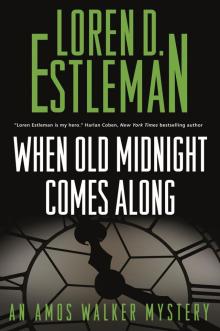 When Old Midnight Comes Along
When Old Midnight Comes Along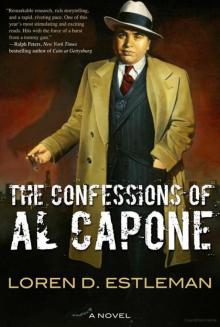 The Confessions of Al Capone
The Confessions of Al Capone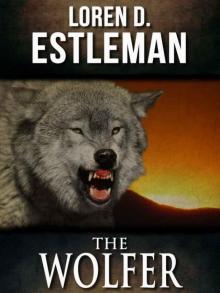 The Wolfer
The Wolfer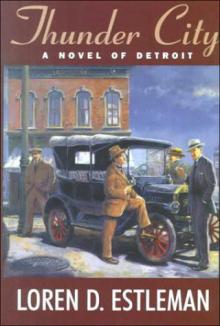 Thunder City
Thunder City Loren D. Estleman - Valentino 01 - Frames
Loren D. Estleman - Valentino 01 - Frames Stamping Ground
Stamping Ground Midnight Man
Midnight Man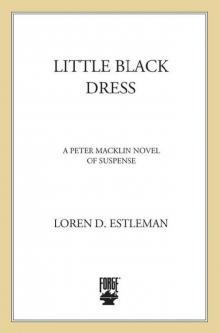 Little Black Dress (Peter Macklin Novels)
Little Black Dress (Peter Macklin Novels) Loren D. Estleman - Amos Walker 16 - Poison Blonde
Loren D. Estleman - Amos Walker 16 - Poison Blonde Brazen
Brazen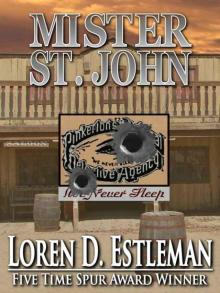 Mr. St. John
Mr. St. John Don't Look for Me: An Amos Walker Novel (Amos Walker Novels)
Don't Look for Me: An Amos Walker Novel (Amos Walker Novels)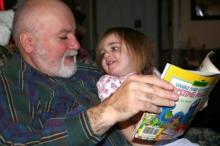 Stress
Stress Sugartown
Sugartown Loren D. Estleman - Valentino 02 - Alone
Loren D. Estleman - Valentino 02 - Alone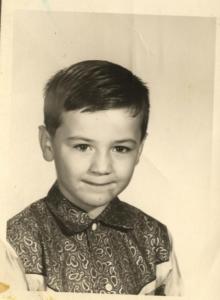 Sweet Women Lie
Sweet Women Lie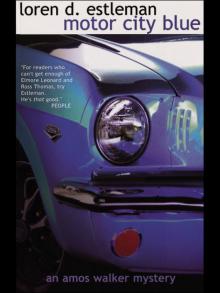 MOTOR CITY BLUE
MOTOR CITY BLUE The Perils of Sherlock Holmes
The Perils of Sherlock Holmes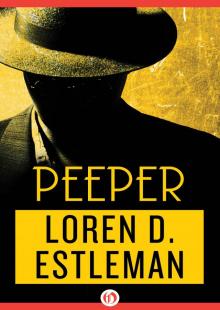 Peeper
Peeper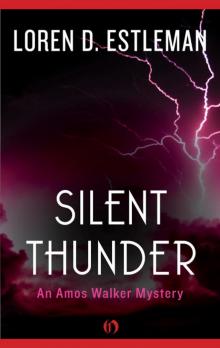 Silent Thunder
Silent Thunder Port Hazard
Port Hazard A Smile on the Face of the Tiger
A Smile on the Face of the Tiger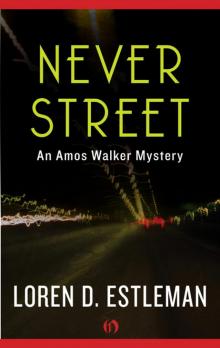 Never Street
Never Street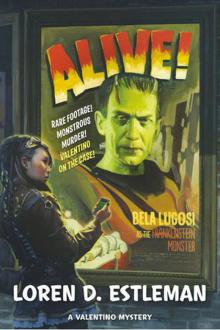 Loren D. Estleman - Valentino 03 - Alive!
Loren D. Estleman - Valentino 03 - Alive! Valentino: Film Detective
Valentino: Film Detective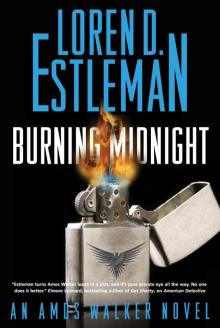 Burning Midnight
Burning Midnight Frames
Frames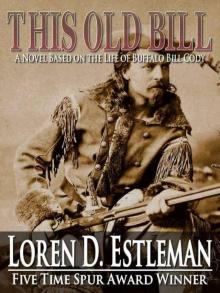 This Old Bill
This Old Bill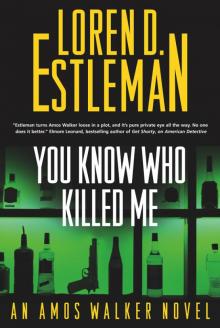 You Know Who Killed Me
You Know Who Killed Me Ragtime Cowboys
Ragtime Cowboys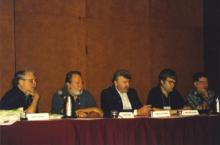 Edsel
Edsel Book Club
Book Club Alive!
Alive!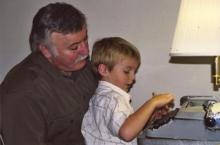 Whiskey River
Whiskey River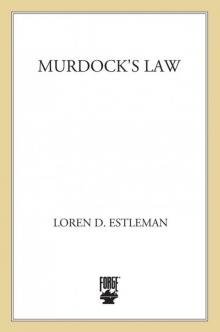 The Murdock's Law
The Murdock's Law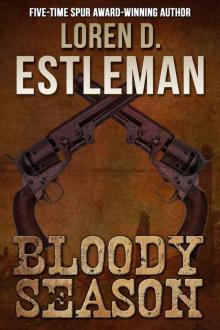 Bloody Season
Bloody Season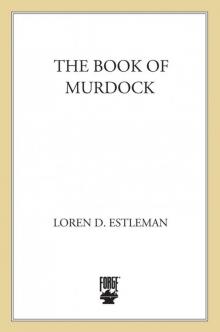 The Book of Murdock
The Book of Murdock Something Borrowed, Something Black
Something Borrowed, Something Black The High Rocks
The High Rocks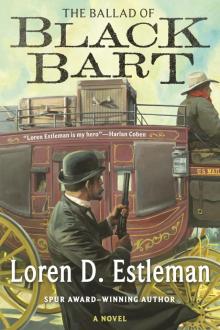 The Ballad of Black Bart
The Ballad of Black Bart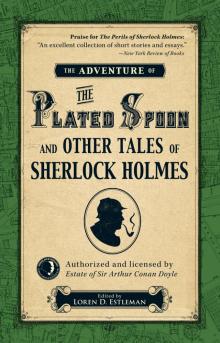 The Adventure of the Plated Spoon and Other Tales of Sherlock Holmes
The Adventure of the Plated Spoon and Other Tales of Sherlock Holmes The Adventures of Johnny Vermillion
The Adventures of Johnny Vermillion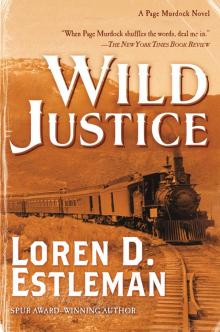 Wild Justice
Wild Justice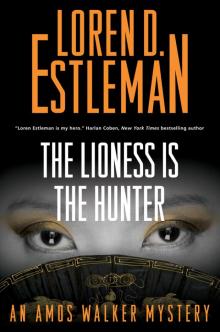 The Lioness Is the Hunter
The Lioness Is the Hunter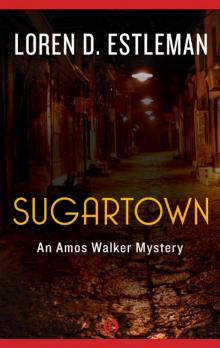 Sugartown: An Amos Walker Mystery (Book Five)
Sugartown: An Amos Walker Mystery (Book Five) Cape Hell
Cape Hell Downriver
Downriver Loren D. Estleman - Amos Walker 17 - Retro
Loren D. Estleman - Amos Walker 17 - Retro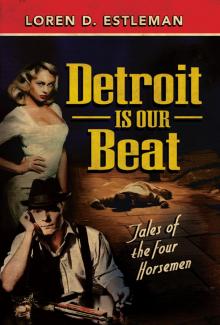 Detroit Is Our Beat
Detroit Is Our Beat Jitterbug
Jitterbug The Sundown Speech
The Sundown Speech Loren D. Estleman - Amos Walker 21 - Infernal Angels
Loren D. Estleman - Amos Walker 21 - Infernal Angels Kill Zone
Kill Zone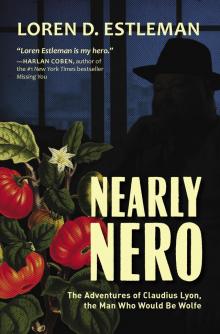 Nearly Nero
Nearly Nero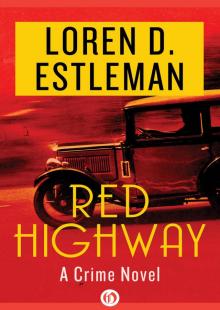 Red Highway
Red Highway American Detective: An Amos Walker Novel
American Detective: An Amos Walker Novel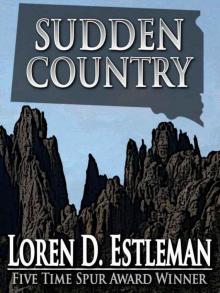 Sudden Country
Sudden Country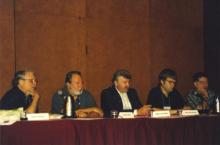 King of the Corner
King of the Corner Evil Grows & Other Thrilling Tales
Evil Grows & Other Thrilling Tales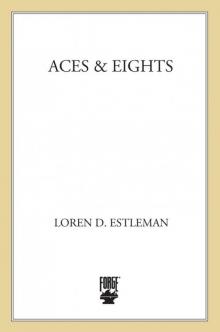 Aces & Eights
Aces & Eights Black and White Ball
Black and White Ball The Hider
The Hider Alone
Alone Amos Walker: The Complete Story Collection
Amos Walker: The Complete Story Collection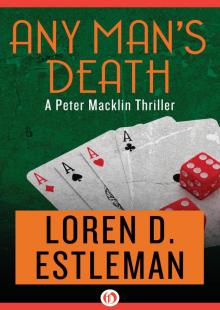 Any Man's Death
Any Man's Death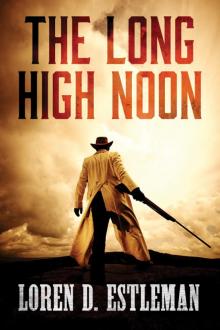 The Long High Noon
The Long High Noon The Witchfinder
The Witchfinder Sinister Heights
Sinister Heights City of Widows
City of Widows Roses Are Dead
Roses Are Dead Loren D. Estleman - Amos Walker 18 - Nicotine Kiss
Loren D. Estleman - Amos Walker 18 - Nicotine Kiss